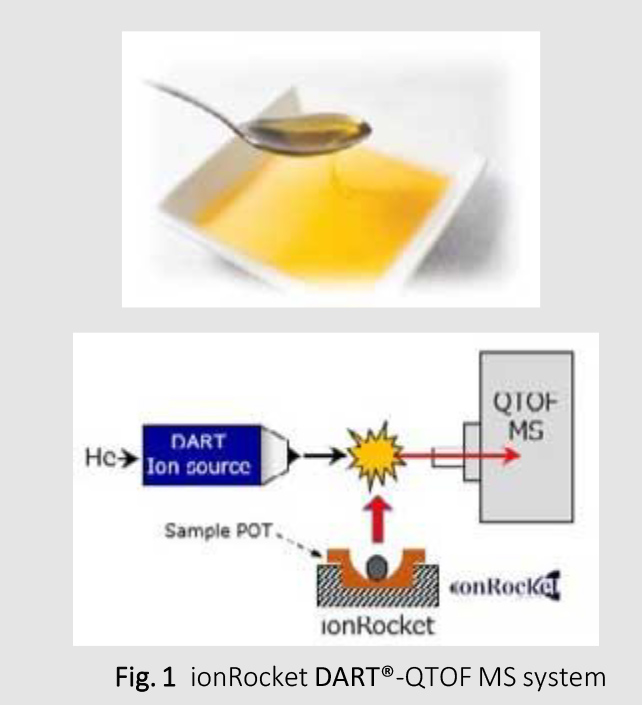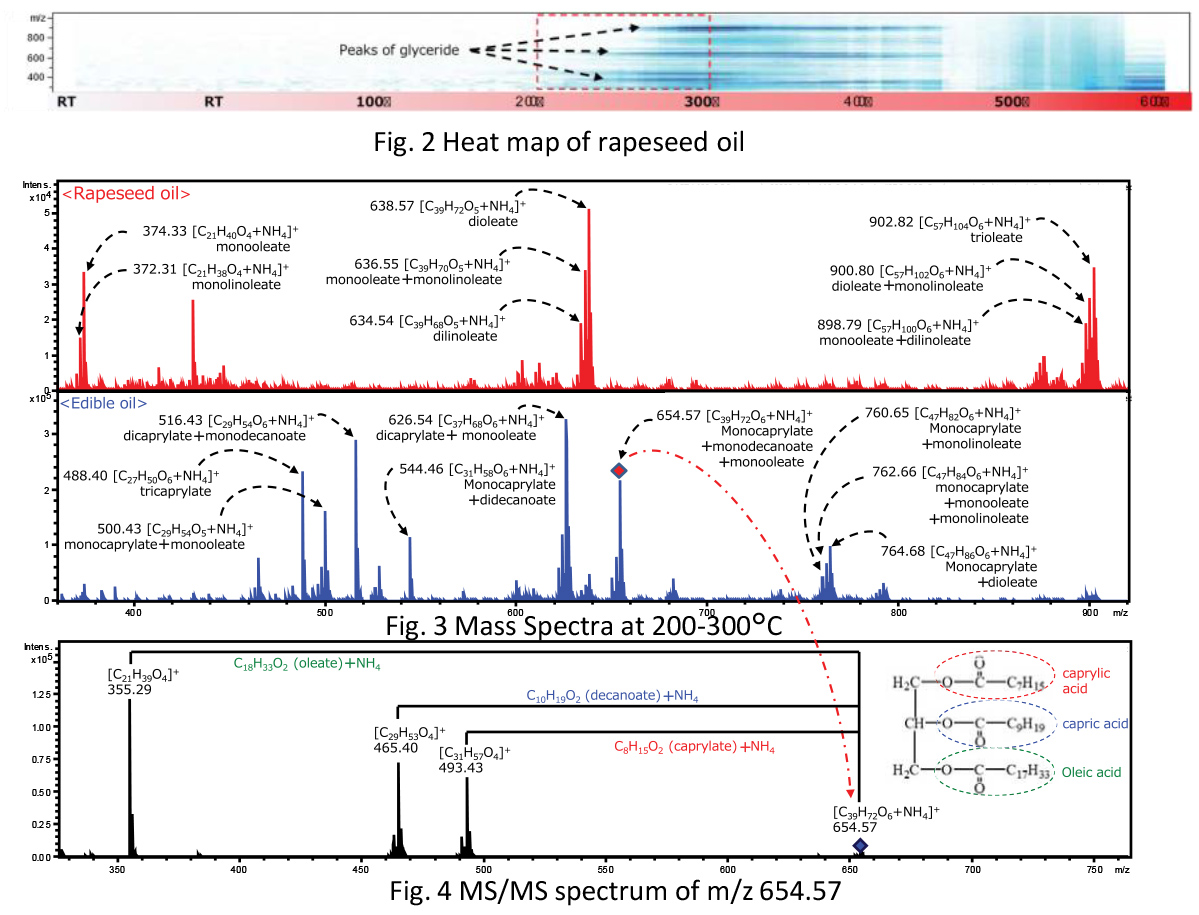Glycerides in Edible Oils
Background
In cardiovascular medicine, increasing attention is being been given to the varying health effects of different edible oils. Edible oils are predominantly acylglycerols (fatty acids esterified with glycerol, also known as glycerides), with different fatty acid constituents associated with positive and negative health effects.
Analytical methods that can quickly and easily determine the fatty acid composition of edible oils are thus of increasing importance. In this report, we introduce the fatty acid composition analysis results of glycerides in edible oil using ionRocket coupled with Direct Analysis in Real Time Quadrupole Time of Flight Mass Spectrometry (DART®-QTOFMS).
Samples
1. Rapeseed Oil 2. Edible oil containing mediumchain fatty acids
Methods

ionRocket combined with a DART® equipped QTOF-MS was used as the analytical system for this application (Fig. 1). 3 μL samples were placed into the ionRocket sample POT. A temperature gradient of 100°C/min. from room temperature to 600°C was applied (total run time: 7 min.).
Results
As shown in Fig. 2, peak groups presumed to be glycerides were detected between 200-300°C in rapeseed oil. Further analysis of the resulting mass spectra between 200- 300°C of both samples detected many different glycerides (Fig. 3). Moreover, analysis of the accurate mass and the MS/MS spectra easily confirmed the fatty acid constituents of the glycerides (Fig. 4).
In summary, the ionRocket combined with DART®-MS enables rapid analysis of fatty acid constituents of acylglycerols without any sample pretreatment. Therefore, this analytical method is useful for R&D and QC for fats and oils.

